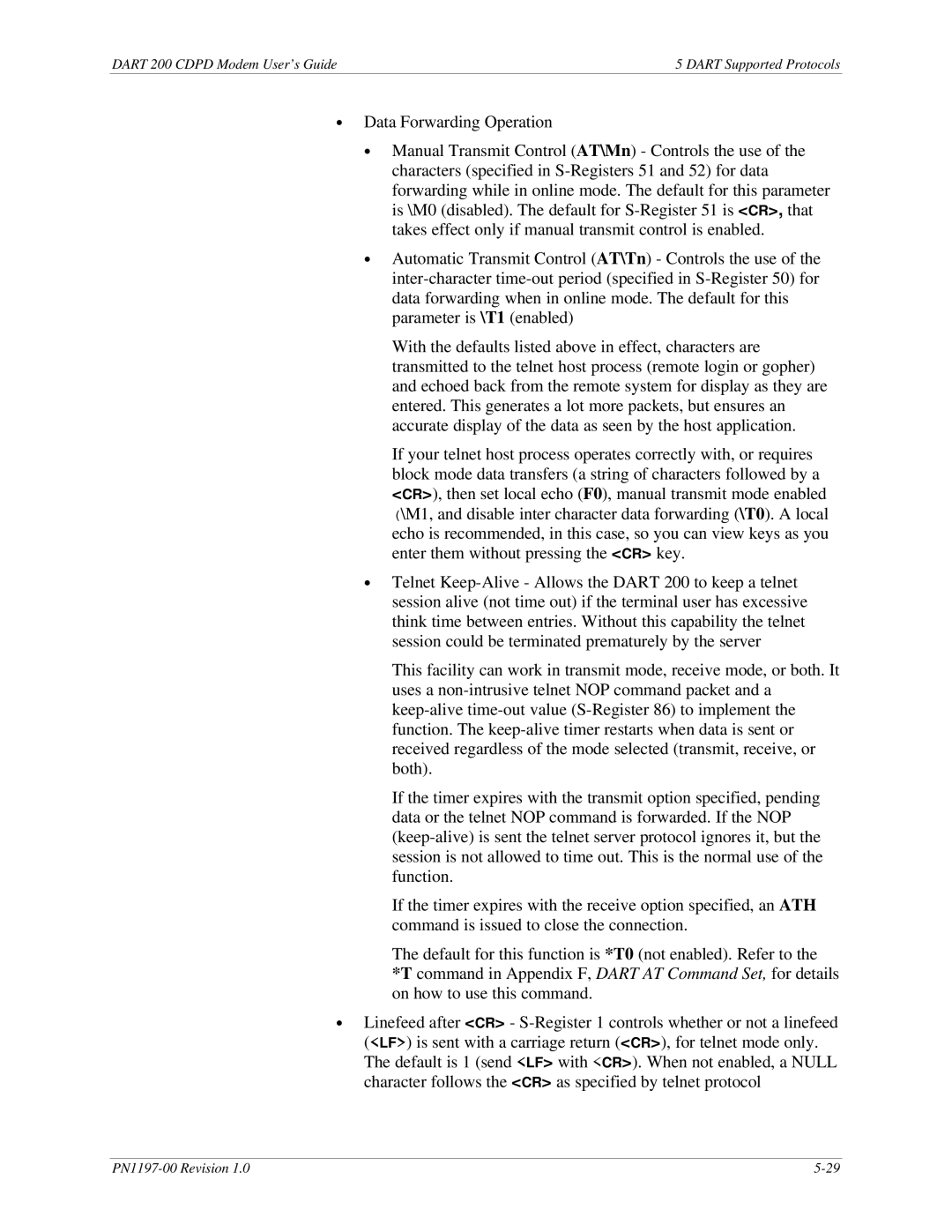DART 200 CDPD Modem User’s Guide | 5 DART Supported Protocols |
∙Data Forwarding Operation
∙Manual Transmit Control (AT\Mn) - Controls the use of the characters (specified in
∙Automatic Transmit Control (AT\Tn) - Controls the use of the
With the defaults listed above in effect, characters are transmitted to the telnet host process (remote login or gopher) and echoed back from the remote system for display as they are entered. This generates a lot more packets, but ensures an accurate display of the data as seen by the host application.
If your telnet host process operates correctly with, or requires block mode data transfers (a string of characters followed by a <CR>), then set local echo (F0), manual transmit mode enabled (\M1, and disable inter character data forwarding (\T0). A local echo is recommended, in this case, so you can view keys as you enter them without pressing the <CR> key.
∙Telnet
This facility can work in transmit mode, receive mode, or both. It uses a
If the timer expires with the transmit option specified, pending data or the telnet NOP command is forwarded. If the NOP
If the timer expires with the receive option specified, an ATH command is issued to close the connection.
The default for this function is *T0 (not enabled). Refer to the *T command in Appendix F, DART AT Command Set, for details on how to use this command.
∙Linefeed after <CR> -
